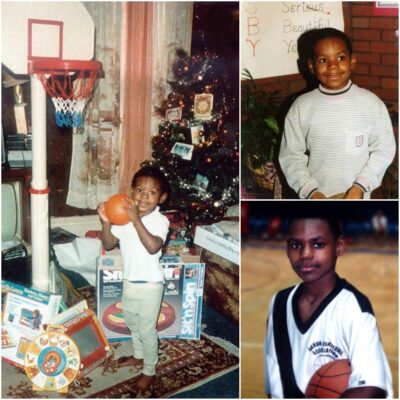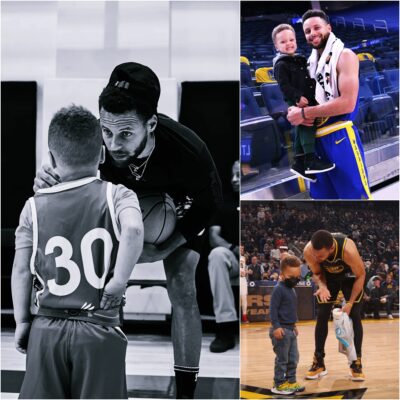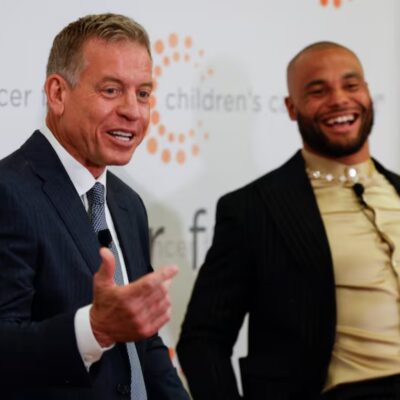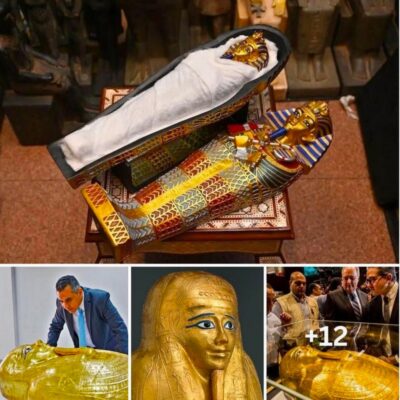
By Jon Machota, Dan Sheldon and more 2h ago
The Dallas Cowboys and Manchester United. When it comes to the NFL and the Premier League respectively, they are two institutions that are almost as storied as the competitions themselves.
But both of them are fame-rich and success-poor over recent years. For the Cowboys, their on-field failure stretches back as far as 1996. While United have won a number of trophies in the intervening years, they have not won the Premier League since 2012-13.
What, exactly, has gone wrong in the interim? Why do two of the most powerful and famous teams in two of the most powerful and famous leagues have such a tough time when the game is actually being played? And can they learn anything from each other?
The Athletic’s experts Jon Machota, Dan Sheldon and Saad Yousuf had a conversation about the two teams and how they compare, contrast and can take something from each other.
Catch me up on the team’s situation…
Yousuf: On raw numbers alone, the story of the Dallas Cowboys paints a picture of remarkable success. They have won five Super Bowls, which is tied with their NFC rivals, the San Francisco 49ers, for second all-time. They appeared in eight Super Bowls, which is also tied for second all-time.
The problem is that much of the fanbase today hardly has any recollection of those achievements. The Cowboys have been roaming in the desert for nearly three decades, their last ounce of meaningful achievement coming in the 1995 NFL season, which is the last time they won a Super Bowl or even appeared in a conference championship game.
According to Forbes, the Cowboys remain the most valuable sports franchise in the world. Their popularity today is built largely on their past, which includes a sizzling decade in the 1970s in which they earned the nickname America’s Team. This has almost become a punchline now. They also achieved dynasty status in the 1990s with their success in the first half of that decade.
There are parts of their present that allow them to maintain their popularity. Despite only winning four playoff games this century, the Cowboys are rarely irrelevant, teasing fans just enough to pull them in before leaving them empty with disappointment. They also have an owner who has mastered marketing and can keep his team constantly in the dialogue.
Sheldon: On history, stature and the attention they generate, United remain England’s biggest club and are followed — they say — by more than one billion people across the globe. But they have spent more than a decade without winning the Premier League title, something Sir Alex Ferguson won 13 times before he retired as their manager in May 2013.
It is the trophy they covet most, but a series of poor decisions made in the boardroom, namely player recruitment and managerial hires, has left them a long way behind Manchester City, Liverpool and now Arsenal as the league’s most dominant team.
In February 2023, Erik ten Hag, their manager, led them to their first trophy — the Carabao Cup — in six years after beating Newcastle at Wembley. They have been a non-entity in the Champions League for several years, sometimes not even qualifying for the competition, and this season finished bottom of their group, which included Copenhagen and Galatasaray.
Ten Hag has guided them into the FA Cup semi-final and they are pushing to finish in the top four, which would see them qualify for next year’s Champions League, but they are six points behind Tottenham Hotspur in fifth place and nine points behind fourth-place Aston Villa.
What is the biggest single problem the team has?
Sheldon: We will save the incoherent structure behind the scenes for a later answer, so this one will focus on an issue every Premier League club is now having to contend with: profit and sustainability rules (PSR).
More so than ever before, the Premier League is paying serious attention to clubs’ finances and what a team can spend is directly impacted by their profit and loss column in their end-of-year accounts.
United are allowed to make a £15million ($19m) loss over a three-year monitoring period, with a further £90m deficit permitted (a total of £105m) if it is covered by secure funding from the club’s owners. Certain costs can be deducted, such as infrastructure, women’s and youth football and community work.
Because of the power of United’s brand, and despite their lack of success, they still generate significant revenues. But the PSR rules, which have led to Everton and Nottingham Forest being deducted points, mean they can no longer just buy their way out of trouble.
They will need to invest smartly, which is something they have failed to do in recent years and will pose a big challenge as they can no longer afford to get big-money signings wrong.
Mochata: The Cowboys have struggled to have any real playoff success since the 1995 season. Over that 28-year Super Bowl drought, they’ve had five or six teams capable of reaching the Super Bowl. Over the last three regular seasons, they’ve won 36 games. Only the Kansas City Chiefs have won more. But during that time, the Cowboys only have one playoff win and the Chiefs have nine.
So, who is most to blame for the lack of playoff success? The number one answer would have to be the owner and general manager. Jerry Jones is the one constant throughout that drought, but the argument can also be made that he helped build rosters that were good enough to win 12 games in each of the last three seasons, or 13 in 2016 and 2007.
For some reason, when the playoffs start, the Cowboys rarely show up. Over the past 28 seasons, only six of the NFL’s 32 teams have not at least reached their conference championship game. The Cowboys are one of them. The only other NFC team is the Washington Commanders. The Cowboys have made it to the playoffs 13 times since the 1995 season. That is the most playoff appearances by any team without at least reaching the conference championship game.
What do fans think of the owners?
Yousuf: Cowboys fans largely seem to be exhausted with Jerry Jones, who operates not only as the team owner but also as the general manager, leading the way in personnel decisions and heavily influencing the product on the field.
There’s no question how good Jones was for the franchise when he bought the team in 1989, rescuing the Cowboys from a stretch of ineptitude and instantly delivering a dynasty. However, Jones didn’t do it alone. He had a coach in Jimmy Johnson who deserved a lot of credit for the turnaround and Jones inexplicably parted ways with Johnson after the team’s second of three Super Bowl wins in the 1990s. The next coach, Barry Switzer, won the Super Bowl the following year, but most people understood that it was Johnson’s team that Switzer won with.
The Switzer era flamed out quickly and Jones has been searching for a coach capable of winning ever since. There have been some established names, such as Bill Parcells in the early 2000s and the current coach, Mike McCarthy, but nobody has been able to deliver. The common denominator through it all has been Jones.
Jones still wants to win, but the definitions of winning as an owner and a general manager, both titles that he holds, are different and often conflict. Jones is still winning, and winning big, as the owner of the Cowboys. His asset, the Cowboys, has been raking in cash and maintaining popularity throughout most of Jones’ ownership, but the Cowboys fanbase is more interested in seeing the Cowboys win on the field. While Jones wants to win on the field, too, he only wants to do it his way and it’s a secondary focus to his winning off the field. That disparity is what has caused many Cowboys fans to grow tired of Jones.
Sheldon: United fans have been protesting for the Glazer family to sell the club since their leveraged buyout in 2005. United were debt-free before the Glazers completed their takeover and United now owe £653.3million and have spent £772.5m in interest charges, while the American family also took annual dividends — totalling more than £150m — between 2016 and 2022.
So, to say they are unpopular would be an understatement; they are despised. After a year-long negotiation with Sir Jim Ratcliffe, the British billionaire and founder of petrochemicals firm INEOS, they sold a 28.9 per cent stake in the club for £1.3billion in February.
While Ratcliffe’s arrival has so far been widely viewed as a positive step in the right direction, the apathy towards the Glazers remains. Fans continue to chant anti-Glazer songs at home and away matches and the protests will not stop until the American family sells the rest of their shares.
As part of Ratcliffe’s deal to buy a minority stake in United, he will assume total control of the football operations, leaving the Glazers to focus on commercial aspects of the club, which is something nobody can deny has been a success under their ownership, with United only recently announcing a new decade-long £90million-a-year deal with kit supplier Adidas.
Are there issues over player recruitment?
Sheldon: United have a history of overpaying for their transfer targets and signing the wrong profile of player.
A recent example of them paying over the odds is when they bought Antony, a Brazilian winger, from Ajax in 2022. The 24-year-old cost the club £86million and The Athletic revealed in December that United scouts had valued him at around £25m. But under pressure from Ten Hag to get a deal over the line, they spent considerably more to sign him.
This is the same club that signed 36-year-old Cristiano Ronaldo in August 2021 on an initial two-year contract, costing €15million (£12.8m; $16.2m) and considerably more in wages, with the option to add an additional 12 months. United agreed to make him their highest earner, on £450,000 per week.
In fairness, Ronaldo scored more than 20 goals in his first season, but he then had his contract terminated towards the end of 2022 after falling out with Ten Hag. He joined Saudi Pro League side Al Nassr as a free agent.
United have often been criticised in the past for signing players entering the latter stages of their career, such as Casemiro, instead of targeting a younger version who will have considerable sell-on value in the years to come.
Mochata: Despite not having a championship season in nearly 30 years, the Cowboys still attract players as well as anyone in the NFL. It’s very common for current and former players to acknowledge that they wanted to play for the Cowboys. Recruitment is more difficult than it was when the Cowboys were winning championships. There’s a salary cap now, so they can’t just sign every star player that wants to be in Dallas.
It’s very common for the Cowboys to be named whenever a top player becomes available, but the Cowboys rarely make moves to acquire big-name talent like they did in the early 1990s with players like Deion Sanders. Over the past decade, they have operated by a draft-and-develop strategy. They have drafted well, so they prefer to put almost all of their focus on re-signing those players rather than spending significantly on star players from other teams.
If the offers were similar, it would be a significant story if a player chose another team over playing for the Cowboys.
What about the infrastructure?
Mochata: There has been a lot of criticism over the years about the Cowboys’ culture. A lot of attention comes with playing and coaching for one of the most famous sports franchises. No team gets more media attention. And much of that is driven by Jerry Jones. As long as players aren’t getting in trouble off the field, any Cowboys news is good news to Jones.
And he makes the team as accessible as possible. One example is the constant fan tours that go through the team’s headquarters. Former players have talked about that being one of many potential distractions that come with playing for the Cowboys.
“(Dallas is) literally a zoo, dude,” former Cowboys tight end Dalton Schultz said during a recent interview on The Pat McAfee Show. “There’s people tapping on the glass trying to get people’s attention while they’re doing power cleans (in the weight room) or whatever. It’s different. That’s the brand that they’ve built, that’s what Jerry Jones likes, that’s the way they run things and there’s nothing wrong with that. You don’t realise how many eyeballs and how much that can maybe distract in the locker room, just being in the facility until you go somewhere else and you’re like, ‘Holy crap, there’s none of that’.”
There’s probably no dollar amount that would lead to Jones selling the franchise. The Cowboys are expected to remain in the Jones family well beyond Jerry Jones’ time. His sons, Stephen Jones and Jerry Jones Jr., and daughter, Charlotte Jones, are all extremely involved in day-to-day operations.
The Cowboys have one of the top stadiums and one of the top practice facilities in all of sports. Their home stadium and franchise headquarters each cost over a billion dollars to construct.
Sheldon: Even though United fans can only dream of their club having a stadium and training complex as impressive as the Dallas Cowboys’ facilities, Ratcliffe has at least put some impetus into building a new state-of-the-art venue for the club.
As it stands, Old Trafford is dated when compared to other clubs — most notably Tottenham Hotspur in England and Real Madrid’s Bernabeu Stadium in Spain. United’s home has a leaky roof and the chicken isn’t cooked properly.
They are weighing up whether to redevelop Old Trafford as it is, which is estimated to cost around £1billion and would see them add to the 74,310 capacity by increasing the size of the Sir Bobby Charlton Stand on the south side.
Ratcliffe’s preference is to go for a total rebuild on the existing site, something he thinks will cost around £2billion as part of a wider regeneration scheme of the surrounding area in conjunction with Trafford Council. He has already pledged $300million to go towards infrastructure projects, but he knows that amount won’t even touch the sides at Old Trafford.
Carrington, United’s training base, opened in 2000 and despite recent investment, it still falls behind what their domestic rivals have. United spent £9.1million in 2023 improving facilities for the women’s team, the academy and, in 2022, refurbished the swimming pool and canteen for the first team.
What is the biggest thing that needs to change for success to happen?
Sheldon: A coherent structure behind the scenes.
For far too long United have been without a joined-up strategy off the pitch and that has translated to how far behind their rivals they have fallen on the pitch. Clearly, this was their biggest issue as it is the first thing Ratcliffe wanted to address.
United have hired Omar Berrada, City Football Group’s chief operations officer, as their new chief executive. Berrada is serving a period of gardening leave and will take up his new post in the summer. He is replacing Richard Arnold, who left in December and received a £5.5million payout.
They are also in negotiations with Newcastle United regarding compensation for Dan Ashworth, Newcastle’s sporting director. Ashworth has been placed on gardening leave as the two clubs try to agree on a price.

Berrada is going to join United (Mike Egerton/PA Images via Getty Images)
Ashworth is regarded as one of, if not the, best sporting directors in football and his arrival, along with Berrada, should drastically improve the club’s processes behind the scenes. United are considering appointing Jason Wilcox, Southampton’s director of football operations, to be their technical director.
The appointments Ratcliffe wants to make should set United up to be successful in the coming years, but nobody is expecting that to happen overnight.
Yousuf: Some fans may say that Jones selling the team is the big thing, but that is neither realistic nor is it necessarily how far things have to go. An old catchphrase has become popular among Cowboys fans: “Jerry the owner should fire Jerry the GM.” It’s mostly said out of mockery and frustration, but there’s a lot of truth to it.
The Cowboys’ only run of success under Jones’ ownership came when he was the owner and somebody else, outside of his family, was orchestrating the show on the field and the roster. The Cowboys went from being run like a standard multi-million-dollar sports franchise to being run like a family business. There needs to be a restoration to the former, as unlikely as that sounds.
This one thing doesn’t absolve the other parts. Players have to perform better, particularly in the biggest moments and on the biggest stages. There have been years, as recently as last season, in which the roster looked built out for a deep run and the team fell flat because the players fell short. But in the big picture, a structural change at the top is long overdue.
What can they learn from the other team?
Yousuf: The Cowboys and United situations have some similarities, but the drought in Dallas has extended so much longer that it’s become part of the fabric of the team. The main thing the Cowboys can learn from United is to use its resources to reinvent things at the top and allow those people to do their jobs. The hiring of Berrada and the potential arrivals of Ashworth and Wilcox set United up well for success in the future. Instead of Ratcliffe casting a large shadow over the franchise and trying to control everything himself, he’s using United’s brand and resources to put the best possible people for the job in place and allow them to do what they’re best at.
Jones has done this in the past, but only out of desperation. When he bought the Cowboys in 1989, the franchise was down in a bad way and winning on the field was of utmost importance, so he hired Johnson and let him work. Jones did a similar thing by hiring Bill Parcells after the Cowboys were down again in the late 1990s and early 2000s.
Right now, Jones has expressed pride in “hanging around the rim”, meaning he feels the team is close. It’s hard to see a major change in operation when that is the belief.
Sheldon: Although you get the sense Cowboys fans are tired of hearing from Jones, United could take a leaf out of his book and front up far more often than they do, which, quite frankly, is never.
Ratcliffe welcoming journalists to London in February to quiz him on his plans following his investment was a positive step in the right direction, but with the possibility of significant changes — most notably regarding the stadium and executive level — on the horizon, communication is going to be vital.
That, along with many other aspects of the Glazers’ ownership, has been reprehensible. United fans should be kept informed and, quite frankly, that responsibility cannot continue to fall on Ten Hag’s shoulders. The Dutchman has enough to worry about on the pitch, so anything away from that only serves as a distraction.
Access to key executives, be it general managers or owners, in the NFL is far more commonplace than it is in the Premier League, so if United could take a leaf out of Jones’ book — and it’s not like they are going to be demanding to know about every time someone sneezes at Carrington or Old Trafford — then that would make a significant difference and separate the club from their domestic rivals.











